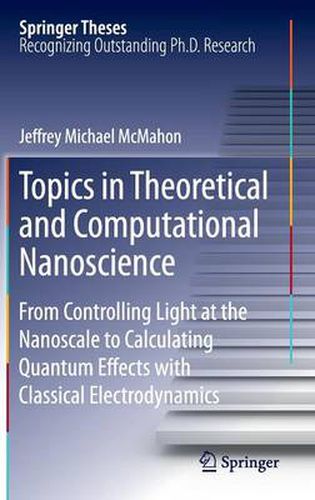Readings Newsletter
Become a Readings Member to make your shopping experience even easier.
Sign in or sign up for free!
You’re not far away from qualifying for FREE standard shipping within Australia
You’ve qualified for FREE standard shipping within Australia
The cart is loading…






This title is printed to order. This book may have been self-published. If so, we cannot guarantee the quality of the content. In the main most books will have gone through the editing process however some may not. We therefore suggest that you be aware of this before ordering this book. If in doubt check either the author or publisher’s details as we are unable to accept any returns unless they are faulty. Please contact us if you have any questions.
Interest in structures with nanometer-length features has significantly increased as experimental techniques for their fabrication have become possible. The study of phenomena in this area is termed nanoscience, and is a research focus of chemists, pure and applied physics, electrical engineers, and others. The reason for such a focus is the wide range of novel effects that exist at this scale, both of fundamental and practical interest, which often arise from the interaction between metallic nanostructures and light, and range from large electromagnetic field enhancements to extraordinary optical transmission of light through arrays of subwavelength holes.
This dissertation is aimed at addressing some of the most fundamental and outstanding questions in nanoscience from a theoretical and computational perspective, specifically:
* At the single nanoparticle level, how well do experimental and classical electrodynamics agree?
* What is the detailed relationship between optical response and nanoparticle morphology, composition, and environment?
* Does an optimal nanostructure exist for generating large electromagnetic field enhancements, and is there a fundamental limit to this?
* Can nanostructures be used to control light, such as confining it, or causing fundamentally different scattering phenomena to interact, such as electromagnetic surface modes and diffraction effects?
* Is it possible to calculate quantum effects using classical electrodynamics, and if so, how do they affect optical properties?
$9.00 standard shipping within Australia
FREE standard shipping within Australia for orders over $100.00
Express & International shipping calculated at checkout
Stock availability can be subject to change without notice. We recommend calling the shop or contacting our online team to check availability of low stock items. Please see our Shopping Online page for more details.
This title is printed to order. This book may have been self-published. If so, we cannot guarantee the quality of the content. In the main most books will have gone through the editing process however some may not. We therefore suggest that you be aware of this before ordering this book. If in doubt check either the author or publisher’s details as we are unable to accept any returns unless they are faulty. Please contact us if you have any questions.
Interest in structures with nanometer-length features has significantly increased as experimental techniques for their fabrication have become possible. The study of phenomena in this area is termed nanoscience, and is a research focus of chemists, pure and applied physics, electrical engineers, and others. The reason for such a focus is the wide range of novel effects that exist at this scale, both of fundamental and practical interest, which often arise from the interaction between metallic nanostructures and light, and range from large electromagnetic field enhancements to extraordinary optical transmission of light through arrays of subwavelength holes.
This dissertation is aimed at addressing some of the most fundamental and outstanding questions in nanoscience from a theoretical and computational perspective, specifically:
* At the single nanoparticle level, how well do experimental and classical electrodynamics agree?
* What is the detailed relationship between optical response and nanoparticle morphology, composition, and environment?
* Does an optimal nanostructure exist for generating large electromagnetic field enhancements, and is there a fundamental limit to this?
* Can nanostructures be used to control light, such as confining it, or causing fundamentally different scattering phenomena to interact, such as electromagnetic surface modes and diffraction effects?
* Is it possible to calculate quantum effects using classical electrodynamics, and if so, how do they affect optical properties?